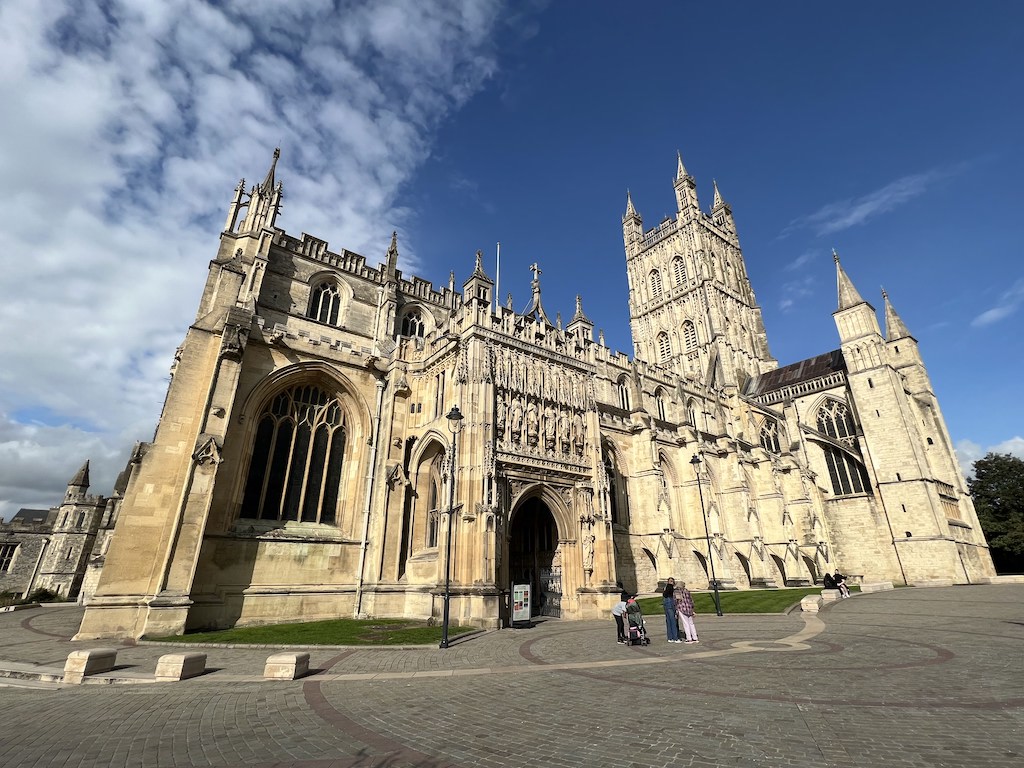How do you enjoy the beauty of a Cathedral? Take numerous photos, post them on social media, get some likes, and period. I used to be like that. But this time, I really want to know something more about Gloucester Cathedral itself, not only following the Harry Potter footprints. So, I did some homework.

As a non-Christian and I have not much knowledge of European history, I borrowed 2 books to help me understand more about churches.
And I want to solidify my learning by explaining it in a simple way in this blog post. I hope you’ll find it useful when you visit Gloucester Cathedral.
Content of this post
- A Romanesque and Gothic Architecture
- 7 Highlights of Gloucester Cathedral
- What to Do and Eat in Gloucester
Curry Boy and I have visited many Cathedrals, churches, monasteries, etc, in Europe. Gloucester Cathedral is one of the most impressive ones I’ve ever seen.
We spent 1.5 hours there!
A Romanesque and Gothic Architecture
Gloucester Cathedral was built and elaborated over a span of 400 years. Starting from 1089, the Normans created this massive Abbey with a huge scale and semicircular arches. They were influenced by the Romans, hence the style also called ‘Romanesque‘.
About 250 years later(in 1330), some professional stonemasons brought a new style to this Abbey, which the style later named as ‘Perpendicular Gothic‘. So Gloucester Cathedral combines both of the Romanesque and Perpendicular Gothic styles.
In the mid 16th century, Henry VIII dissolved monasteries. That’s how the Abbey became a Cathedral as we see today.
Who are Normans?
The Normans were Vikings, the West Franks and Gallo-Romans. Put simply, they are people from the 10th century the Scandinavian countries, West of France and mid the Europe.
What’s the difference between Abbey and Cathedral?
An Abbey is a type of monastery, composed of a complex of buildings that can include a church or a cathedral. The scale of the abbey is big. You can see monks or nuns living, working or studying there, or treating people in need. While the Cathedral‘s functions are mostly for worship.
What is Romanesque style?
During the 10th to 12th centuries, Romanesque buildings sprang throughout Europe and attracted many pilgrims to visit. These buildings usually have increasing height, solid stone walls(hence the inside is dark), round arches and ceiling vaults.
What is Gothic style?
Gothic, this term was coined by Italian Renaissance architects for the northern invaders of the Roman Empire, collectively called the Goths. The architecture itself, often characterised by noticeable increased height, has much larger windows(hence the inside is flooded with lights), and pointed arches.
7 Highlights of Gloucester Cathedral
In Gloucester Cathedral, my eyes were falling here and there, up and down, left and right, all were painstakingly marvellous design.
Below, I included 7 highlights which I find most impressive.
1. Cylindrical Drum Pillars in the Nave
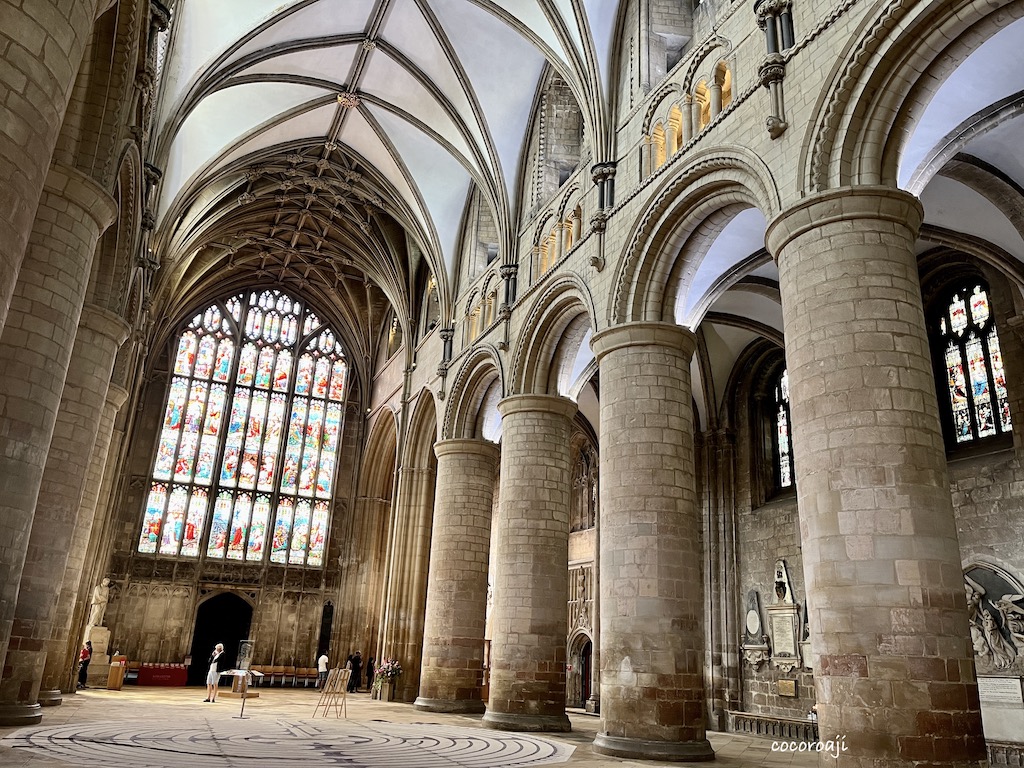
The nave is the main area where people sit and worship. You can consider it is the main hall of a cathedral.
In the nave, you can see the sturdy, cylindrical grand pillars supporting the whole cathedral. The bottom parts of the pillars are reddish-brown due to a fire in 1122. The original roof was also gone in the fire. The vaulting we see today was made after 100 years.
2. A Tennis-Court-Sized Window
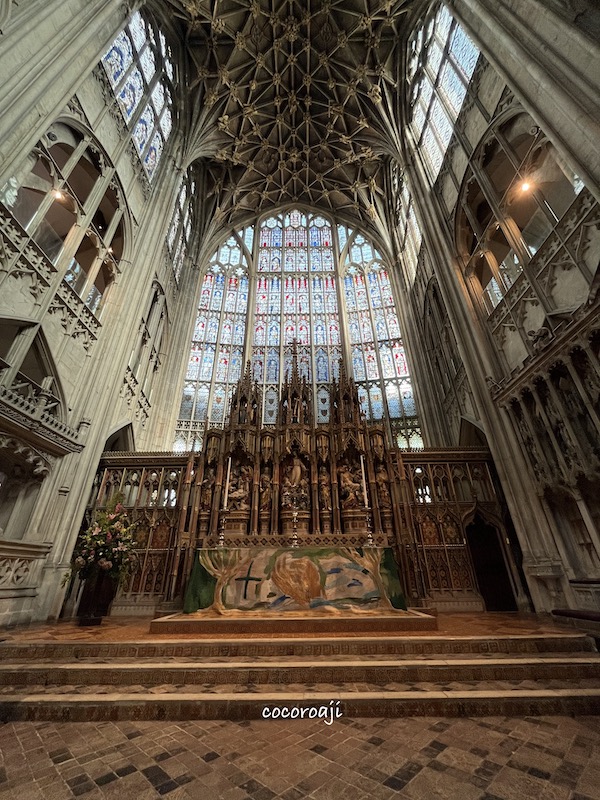
From the picture you may not notice, the Great East Window is the size of a tennis court (22m x 12m)! It was the largest window in the world by the time of installation in the mid 1350s. After the burial of King Edward II, his son, Edward III, commissioned this grand window as part of the reconstruction of the Quire, to glorify his dead father.
3. The Quire (Choir)
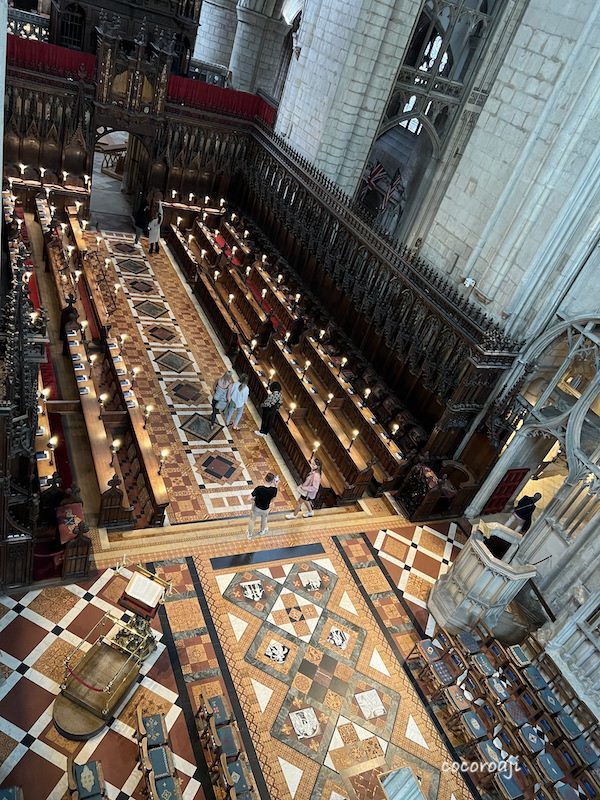
This is the place where the choir sings. The world oldest choir music festival – Three Choirs Festival, also happens here once every 3 years.
Robert II of Normandy (Robert Curthose) is thought to be buried here, where the plain tiles are (bottom of the picture, under the mirror).
Fun fact: ‘Curthose’ means short pants in the Norman French – make fun of his short height.
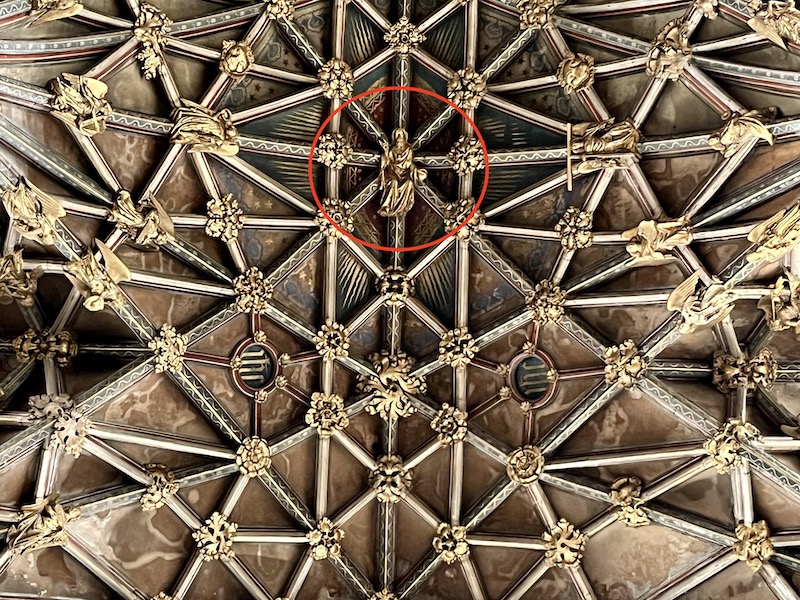
When you’re in the Quire(Choir), don’t forget to look up at the ceiling. Jesus is watching you.
4. Fan Vaulting Ceiling in the Cloister
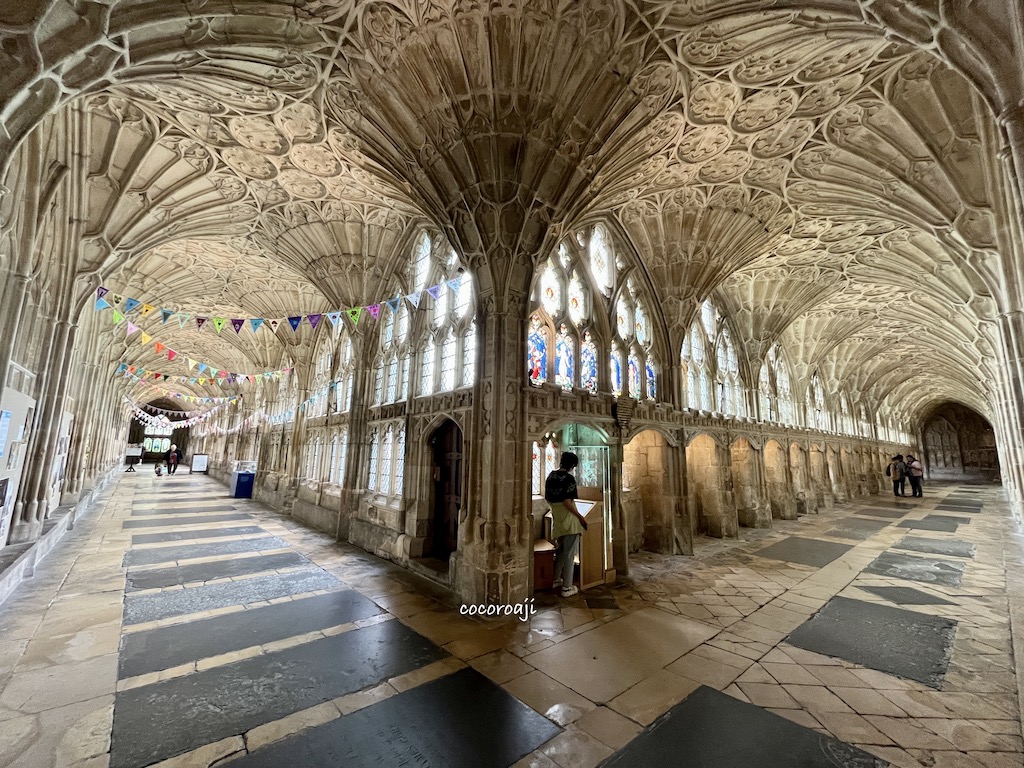
The most seen parts of the Gloucester Cathedral are definitely the marvel design of the fan vaulting ceiling and the Cloisters, thanks to Harry Potter.
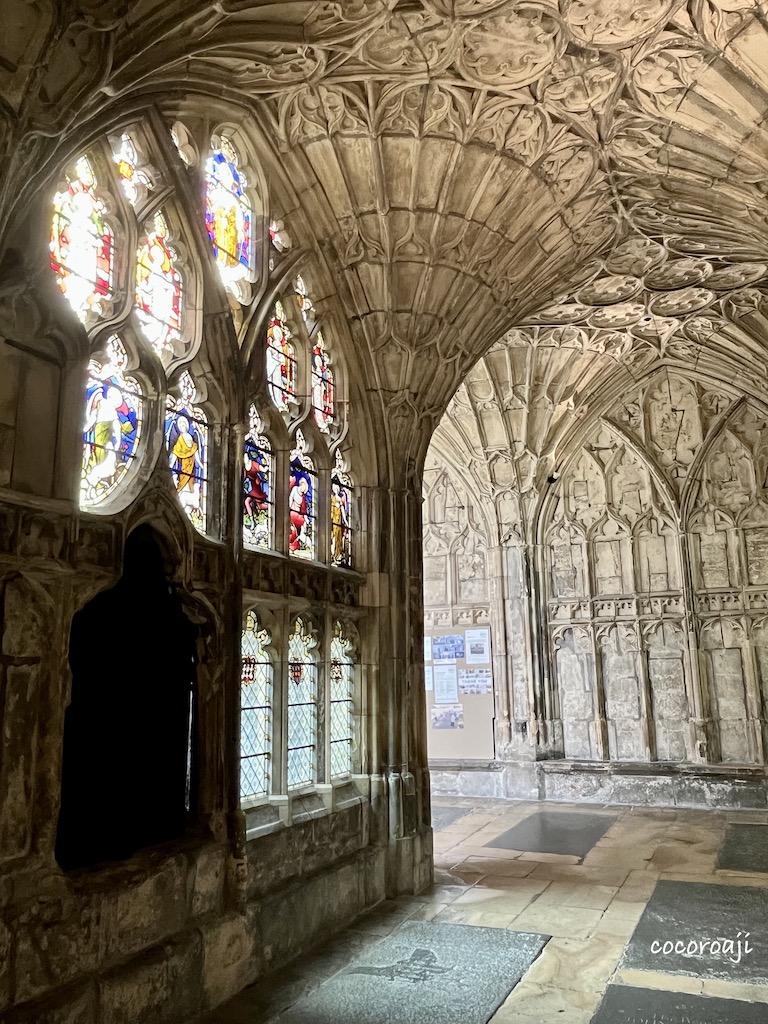
The fan vaulting we can see today dates back to the 14th century. These cone-shaped ‘fans’ are hollow and were carved separately, which were later put together by stonemasons.
5. St. Andrew Chapel
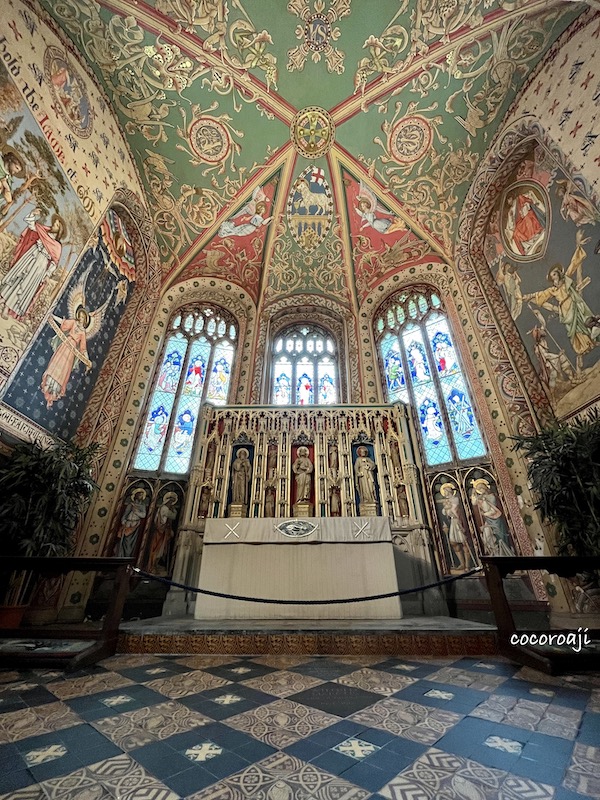
Painted by a local artist, Thomas Gambier Parry, in the 1860’s. It was one of the results of the Gothic Revival architecture movement. He drew numerous decorated fish because Andrew and his brother were fishermen. (Fish was also a secret symbol of Christianity in the early days).
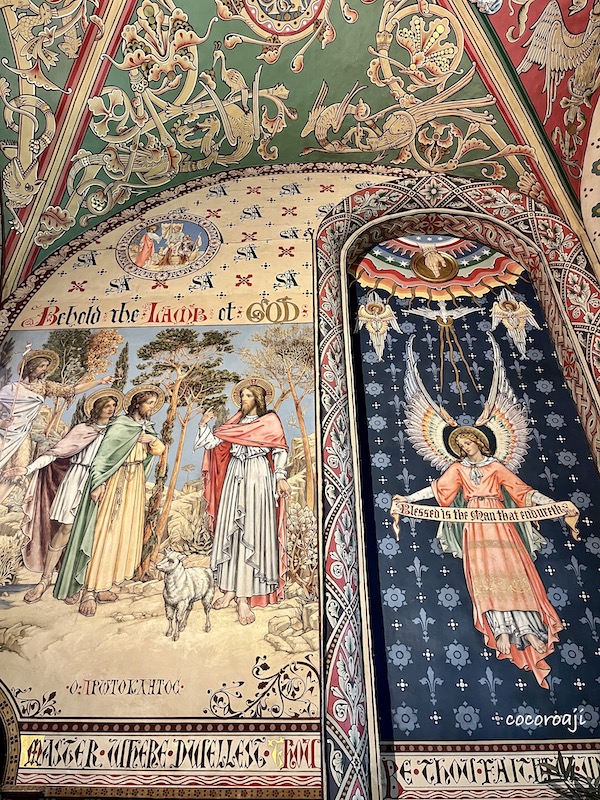
The theme of this mural is discipleship, or following the Jesus.
6. The Thomas Chapel
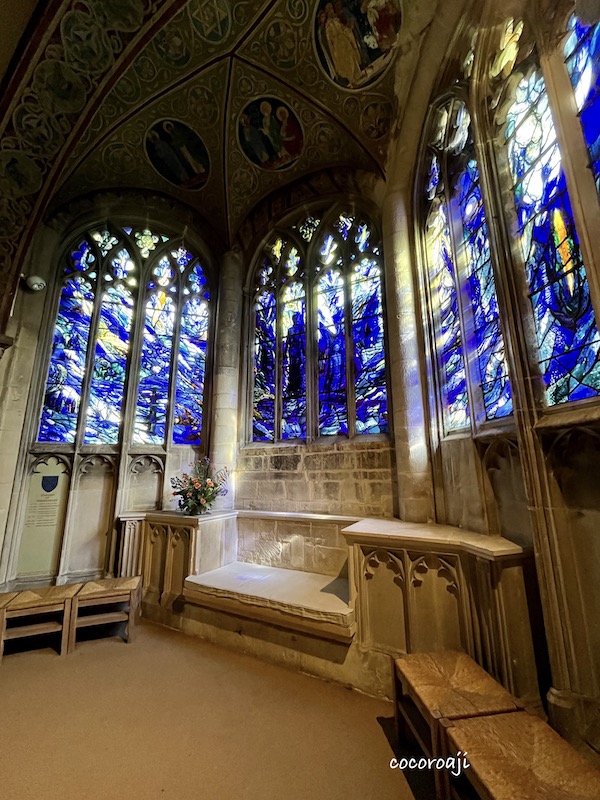
To celebrate the foundation stone laid by the Abbot 900 years ago in 1089, this chapel was refitted with newly created stained glass by a local artist called Thomas Denny. The whole theme sprang from Psalm 148, praising God’s creation.
6. The Most Decorated Tomb
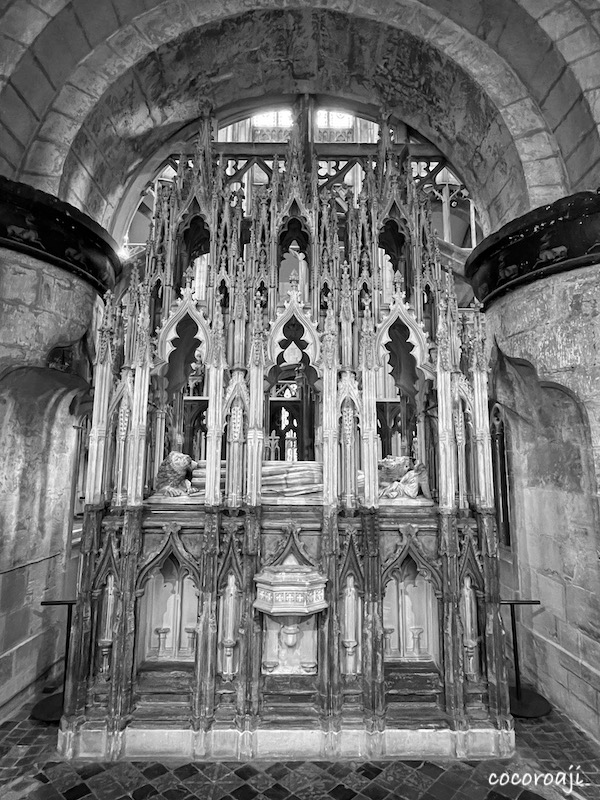
This tomb housed Edward II, the king of England from 1307-1327. He might not be so famous and popular, but his son, Edward III, commissioned this highly decorated tomb in 1330. You could hardly find any other tombs in a church like this one – combining the vaulting, ogees and crocheted finials altogether.
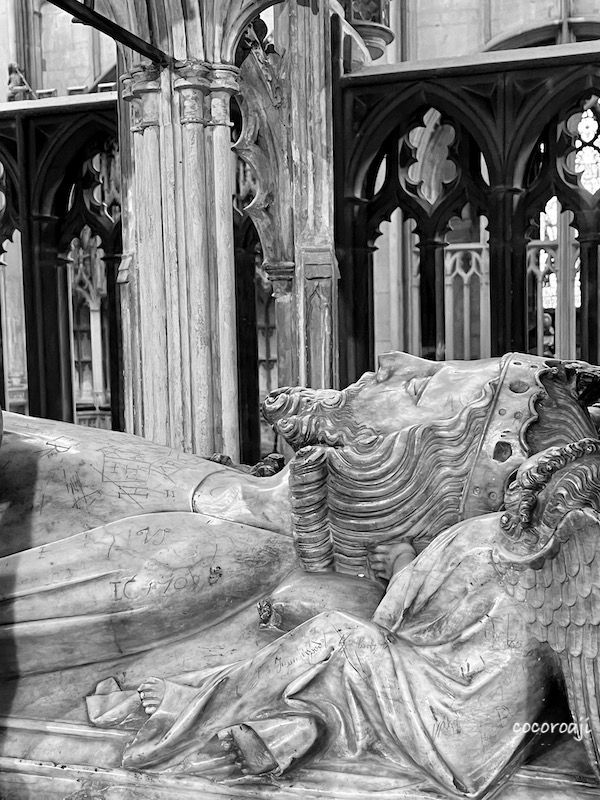
This tomb is made of oolitic limestone and Purbeck marble. His sinuous twisting beard and hair is supported by two blind-eyed angles.
Entry free (by voluntary donation, they suggest £5 per adult)
Opening Times: Monday – Saturday: 10.00am to 5.00pm; Sunday: 12noon-5.00pm
Final Thoughts
By taking time digesting the information indicated in the Cathedral, plus reading and googling some extra materials, I think I’ve not only learned something about this great Gloucester Cathedral, but also a bit of European history which I had no idea before.
When you know more, the dots start to link together and make sense, and the whole thing becomes more interesting.
I hope this small blog post can help anyone who’s going to visit Gloucester Cathedral.
What to Do and Eat in Gloucester
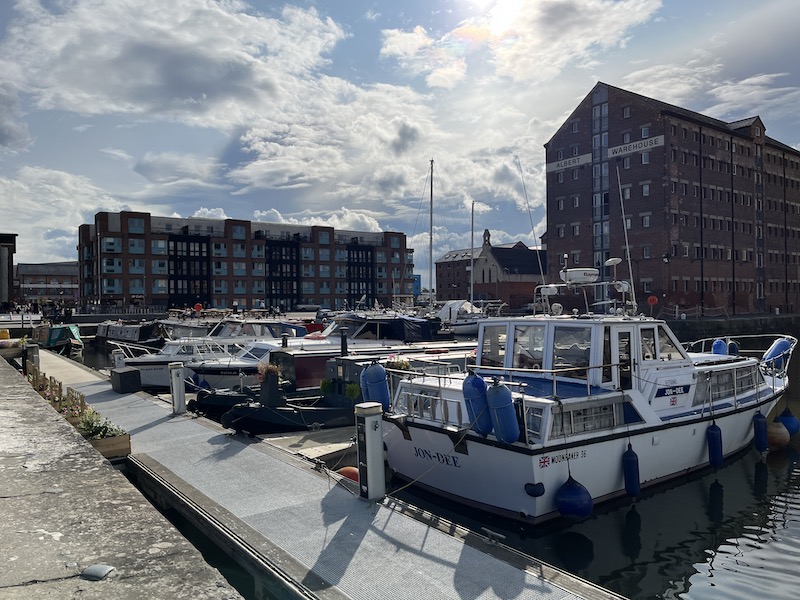
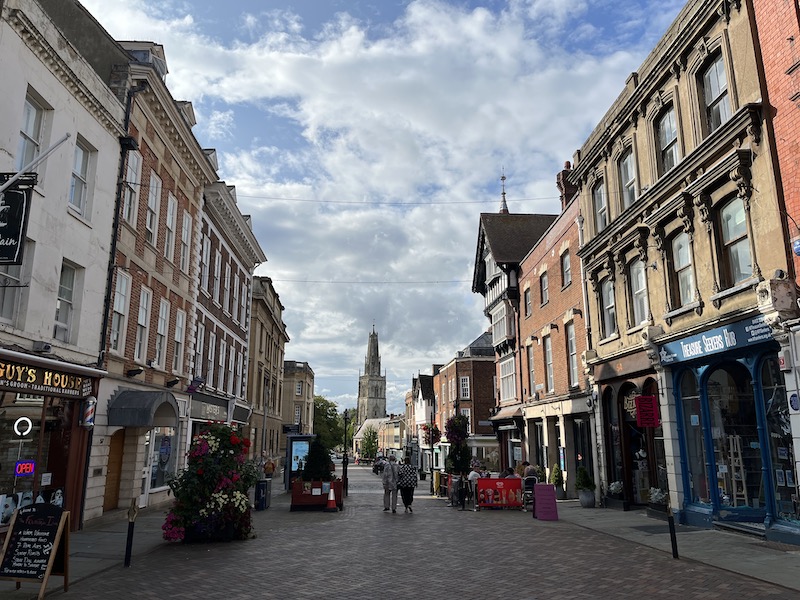
If you want to spend a few more hours in Gloucester after visiting the Cathedral, you can go to the Historic Docks to enjoy some sun, or go shopping at the designer outlet called Quays. Nothing much to see at the high street though.

For food, I definitely recommend going to Cheltenham and enjoy a super good value French lunch. This is a real hidden gem offering unbeatable value of a delicious lunch.
Happy traveling!
